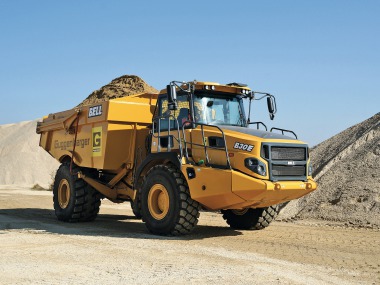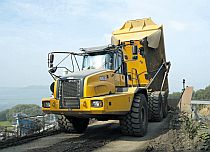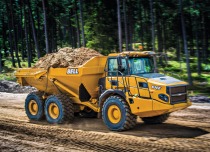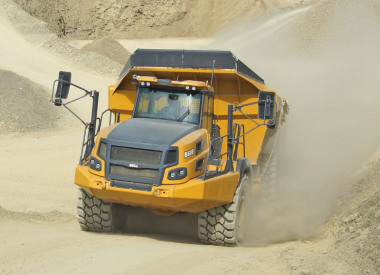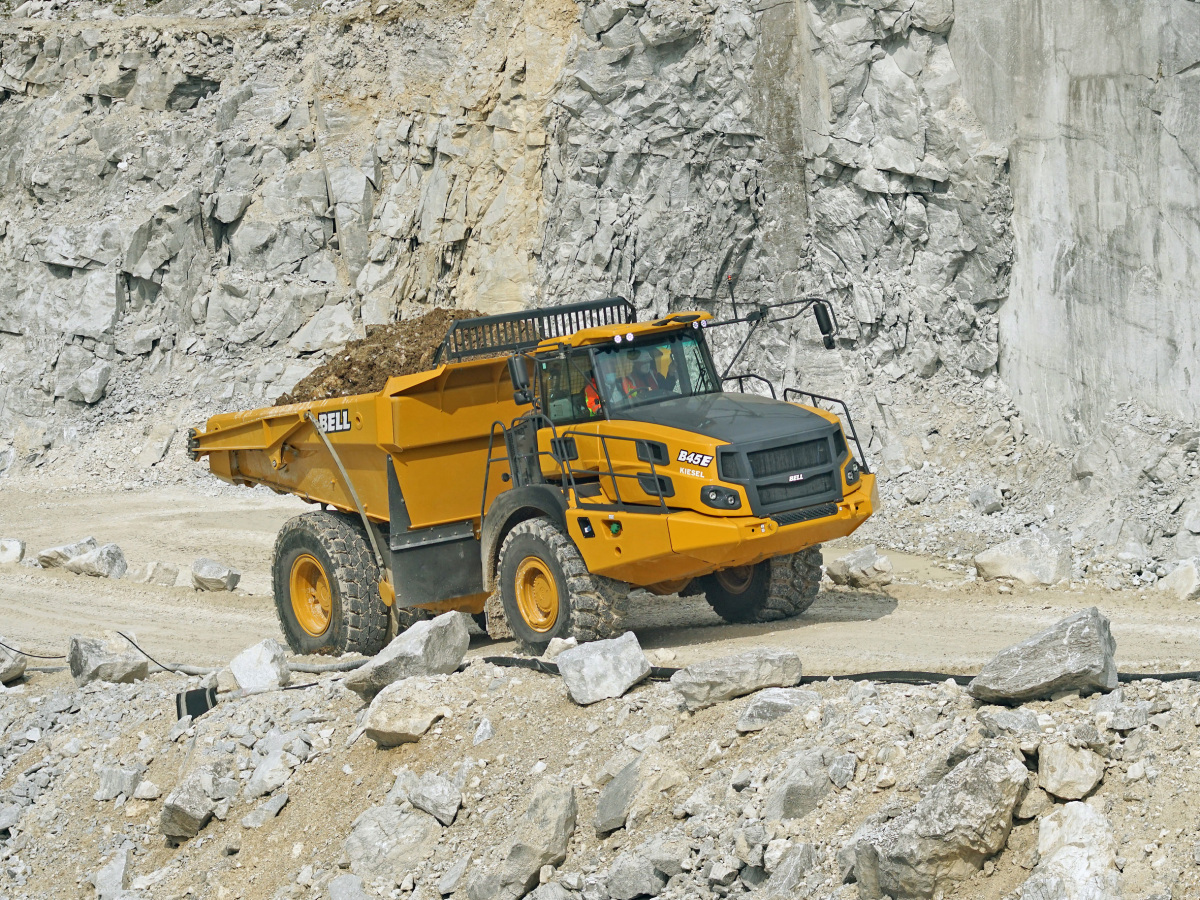Efficiency “on call”
For more than two years, leased Bell dumpers have been the backbone of the transportation fleet of the company. Based on long-term leasing agreements with the Dresden-based Bell partner Beutlhauser and directly with the leasing service of Bell Equipment Deutschland, Frank Plaschnick equips his teams with the Bell B40D. Kompakt-Erdbau has hired up to ten forty-tonners at the same time, distributed to various projects at various locations.
The high demands on Bell dumpers leased by Kompakt-Erdbau were demonstrated by the example of an overburden project of the Caminau-based Kaolinwerke GmbH last summer (Fig. 1). About 650 000 tons of raw earth are extracted every year in the Lusatia-based quarry, which is part of the international Quarzwerke Group. They are further processed to about 200 000 tons of high-quality products for the paper industry according to the content of kaolin/quartz sand amounting to 30 %. The extraction proper is carried out by bucket wheel excavators including connected handling by long belt conveyors throughout the year. The orders for extraction and refilling of the overburden with a thickness of various metres are periodically placed with earthworks specialists using conventional zero- tail-swing excavators and troughs of 6 x 6 m.
Kompakt-Erdbau has been working regularly in Caminau for several years. During the months of June and July 2014 altogether 250 000 m³ of overburden with a thickness of 7.5 m had to be removed and refilled in exploited areas of the quarry. The work depended a lot on the weather due to the sandy and plastic clays in the partially water-bearing layers (Fig. 2). The condition of the subsoil of the transfer routes with a length of up to 600 m (max. inclination of 1:4) and of the loading and dumping points as well as the heavily fluctuating loading weight of the articulated loaders used were critical. The cycle of use of machinery was correspondingly high: back-acting excavators of 5.2 m³ as well as four forty-tonners from Bell moved up to 8000 m³/day in double shifts (2 x 10 hours) (Fig. 3).
Though the payload reserves of the Bell troughs with automatic rear flaps amounting to 24 m³ (nominal 37.0 t) had regularly been exhausted even in wet and clayey parts, the Bell B40D with a capacity of 335 kW reliably achieved their circulating targets and were convincing economically, i.e. with peak values of just over 40 l/h, the documented average consumption amounted to 29.5 l/h during a total of 37 working days.

